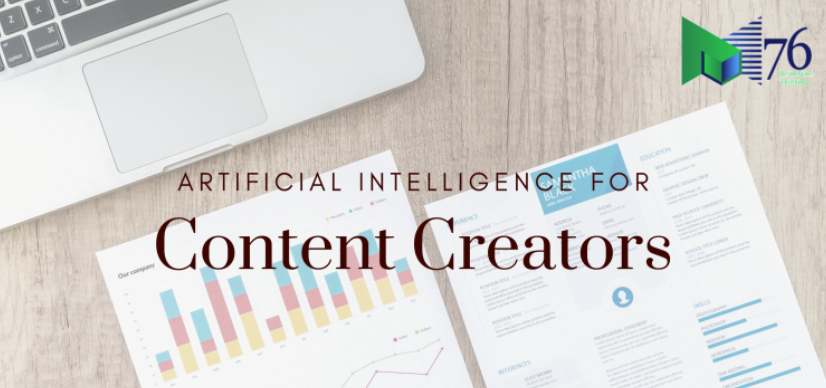Artificial Intelligence: Content Creators' Paradise
If Content creators were to create a tool, what do you think they would aim for? A tool that strives to streamline editorial processes, check. A tool that can assist in increasing the audience engagement, check. A tool that can improve workflow efficiency, double check. Also a tool that could enhance search engine rankings, and grow revenue. Do you know a tool that can do all of the tasks listed above? — all of the creators can benefit from AI and ML technologies.
How is Artificial Intelligence and Machine Learning content creators’ paradise you ask?
Content Classification:
With the top categories being handful, there are often other categories that may interest the reader but are often lost in the flow of the website or the magazine that is published on the web. How to get readers to explore all the categories you have to offer? Over the time the readers start to fall victim to natural shifts in the publishing environment. Here AI can be of extreme use. AI can help evaluate your content to provide a more “objective” subject matter assessment.
The key points that can help you ace your content strategy is:
- Identify the pain points that can help improve the content.
- Help plan the new content that aligns with the goals.
- Improve the content strategy to help focus on search engine optimization.
- Improve internal search capabilities with improved metadata.
- Migrate existing data into the new website architecture.
Image Definition and Accessibility:
With the SEO process revolutionizing, editors often leave out the supplemental image metadata, which even though is not obvious to the visitors on the front end but is an important aspect for the search engine crawlers. Similarly, descriptive image text, while a requirement for most accessibility regulations, is easily prone to being missed or poorly managed in an editorial process. Image definition and descriptive alternative text — or “alt-text” — is most commonly addressed in conversations about enabling visitors with vision difficulties to understand context portrayed in images while using solutions like screen readers. AI and ML vision services can be deployed to simplify media management workflows, boost SEO by helping search engines understand your media content, and ensure website accessibility through more helpful alt-text.
Image Tagging and Smart Cropping:
AI can be used to streamline publishing workflows by automated image tagging. AI can extract rich information from the data uploaded to tag the pictures automatically classified with machine identified tags. This assists the editorial team to simply classify the images into the rich media libraries created by AI.
The other feature where AI can be really useful is smart-cropping. Often it so happens that the image created doesn’t fit the front end of the website. Now to resize the image is a whole lot of work in itself. Here AI can use smart cropping to preserve an image’s main focal point, which helps to ensure the most relevant parts of an image are retained in the various image sizes generated and mitigates awkward framing or cropping.
Topic Recommendation and Personalization:
For editors, retaining the readers and converting one-time readers into engaged audiences can only happen when the content is of high-quality and the recommendations are personalized. But how can one determine when the consumer is visiting for the first time? The editors can leverage thoughtfully-crafted machine learning models to build content recommendation engines that utilize readers’ historical behaviors and in-depth knowledge of the content to anticipate which content a specific reader is most likely to engage with. When these recommendations are positioned well, especially on mobile devices, they become a vehicle to attract and retain readers over time.
Auto-generated content:
Artificial intelligence and machine learning technology can also be leveraged to accelerate the process of content creation. Though it’s unlikely to ever replace thoughtful, nuanced journalism, AI and ML have already been successfully utilized to capture rote content production, like post-round performance summaries, assisting the editors in collecting the required facts. The Washington Posts’ automated robot reporter, back in 2016 generated over 500,000 clicks on over 500 articles written by the robot itself. Similarly some use AI to report the earnings of the newspaper. While some use this technology to report news about natural calamities.
With the ever changing digital landscape the scale of global news media continues to expand, and the demands on local publishers rise. Here AI and ML can be tremendous assets in the newsroom, tackling simple stories, improving productivity, saving time, and supporting human journalists in producing meaningful content. For such assistance you can rely on our asset, Mego which will truly assist your company in content creation, accumulation of information and everything in between.

